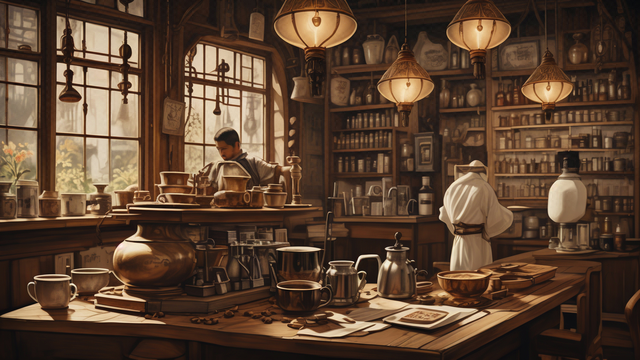
The Rich Culture of European Coffee: A Journey Through Cafés and Brews
Introduction
Coffee is more than just a beverage in Europe; it is a cultural phenomenon that reflects the history, traditions, and social practices of the continent. From the bustling espresso bars of Italy to the serene coffee houses of Vienna, Europe's coffee culture is as diverse as the nations it encompasses. This article explores the various coffee traditions across Europe, highlighting their significance and inviting you to savor these unique experiences.
The Italian Espresso: The Heart of Coffee Culture
Italy is often regarded as the birthplace of modern coffee culture. The espresso, a concentrated coffee brewed by forcing hot water through finely-ground coffee beans, is a staple of Italian life. Italians enjoy their espresso standing at the bar, often accompanied by a small pastry, making it a quick yet social experience.
Unique Aspect: Italians typically avoid drinking cappuccinos after 11 AM, believing that milk-based drinks are meant for breakfast. This cultural nuance adds to the charm of enjoying coffee in Italy.
French Café Society: A Blend of Relaxation and Art
In France, the café culture is synonymous with leisure and artistry. Cafés, such as those found in Paris, serve as gathering spots for friends, artists, and intellectuals. French cafés offer various coffee drinks, including café au lait (coffee with hot milk) and the classic café noir (black coffee).
Cultural Significance: The French café is not just about coffee; it is a space for conversation, creativity, and connection. Many famous writers and artists, like Ernest Hemingway and Pablo Picasso, found inspiration in these vibrant settings.
The Viennese Coffee House: A UNESCO Heritage
Vienna is famous for its historic coffee houses, which have been designated UNESCO World Heritage Sites. Traditional Viennese coffee houses serve a variety of coffee drinks, including melange (a mixture of coffee and milk) and Einspänner (espresso topped with whipped cream).
Atmosphere: These coffee houses often feature elegant interiors, newspapers available for patrons, and a welcoming ambiance that encourages long stays. It’s common for guests to enjoy a leisurely cup of coffee while reading or engaging in conversation for hours on end.
Scandinavian Simplicity: Fika and Coffee Breaks
In Sweden and Norway, coffee is deeply intertwined with daily life. The concept of "fika" in Sweden refers to taking a break to enjoy coffee and pastries, emphasizing the importance of social interactions and relaxation.
Coffee Characteristics: Scandinavian coffee is often lighter and less intense than other coffee styles, with a focus on quality beans and brewing methods. This trend has gained international attention for its emphasis on sustainability and ethical sourcing.
The Spanish Café con Leche: A Daily Ritual
In Spain, coffee is an integral part of daily life, particularly in the form of café con leche, which combines equal parts espresso and steamed milk. Many Spaniards enjoy coffee throughout the day, particularly during social gatherings or after meals.
Social Aspect: Spanish coffee culture promotes socializing, with people often meeting friends for a coffee during their breaks or after work. The social aspect is vital, making coffee a communal experience.
Embracing European Coffee Culture
As you explore European coffee traditions, consider trying different styles and methods unique to each region. Whether enjoying a robust Italian espresso or a delicate Viennese melange, each cup tells a story of its origin and cultural significance.
Conclusion
European coffee culture is a rich tapestry woven from history, art, and social connection. Each country showcases its unique flavors and traditions, inviting coffee lovers to immerse themselves in the experience. The next time you sip a cup of coffee, think about the cultural heritage it represents and perhaps savor it a little longer.
article by imageoss is licensed under CC BY-NC-ND 4.0